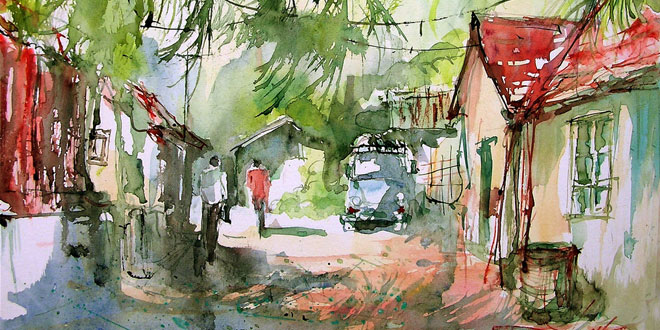Question: How was the Mahalwari System different from the permanent settlement?
Answer:
- Under the Permanent Settlement the rates of revenue was fixed permanently, that is, it was not to be increased ever in future. But in Mahalwari System it was decided that the rate of revenue would be revised periodically, not permanently fixed.
- Under the Permanent Settlement, the zamindars were given the charge of collecting revenue from the peasants and paying it to the Company. But in the Mahalwari System this charge was given to the village headmen.
Question: Give two problems which arose with the new Munro system of fixing revenue.
Answer: Two problems:
- Revenue officials fixed a very high revenue demand and peasants were unable to pay it.
- Ryots fled the countryside and villages became deserted in many regions.
Question: Why were ryots reluctant to grow indigo?
Answer: The planters usually forced the ryots to sign a contract. Those who signed the contract got cash advances from the planters at low rates of interest to produce indigo. But the loan committed the ryot to cultivating indigo on at least 25% of the area under his holding. The planter provided the seed and the drill, while cultivators prepared the soil, sowed the seed and looked after the crop. When the crop was delivered to the planter after the harvest, the ryots got another new loan. In this way, they were trapped in the cycle of loan from which it was difficult to come out. Soon, they realized that this was a harsh system. They did hard labour day and night and got a very low price for the indigo they produced.
Other reason was that the planters usually pressurized the ryots to cultivate indigo on the best soils. But the ryots preferred to grow rice on these soils. Indigo had deep roots and it exhausted the soil rapidly. After an indigo harvest the land could not be used for rice cultivation.
Question: What were the circumstances which led to the eventual collapse of indigo production in Bengal?
Answer: The ryots in Bengal got fed up with the coercive methods the planters used with them and finally refused to grow indigo. They became violent. They not only refused to pay rents to the planters, but also attacked indigo factories armed with swords and spears, bows and arrows. Meanwhile the local zamindars and village headmen also began to favor the indigo ryots. They mobilized the indigo peasants and fought pitched battles with the lathiyals, the lathi- wielding strong men maintained by the planters. In other places even the zamindars went around villages urging the ryots to resist the planters. Worried by the rebellion, the government brought in the military to protect the planters from assault, and set up the Indigo commission to inquire into the system of indigo production. The commission held the planters guilty and criticized them for the coercive method they used with indigo cultivators. It declared that indigo production was not profitable for ryots. The commission asked the ryots to fulfill their existing contracts but also told them that they could refuse to produce indigo in future. After this revolt, indigo production collapsed in Bengal.
 Class Notes NCERT Solutions for CBSE Students
Class Notes NCERT Solutions for CBSE Students


